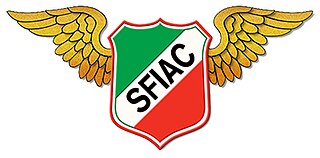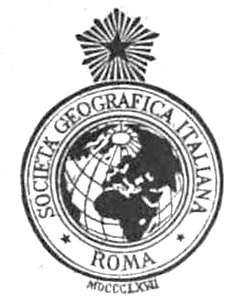External links
| This article about a scientific organization is a stub. You can help Wikipedia by expanding it. |
Unione Zoologica Italiana is an Italian scientific society devoted to Zoology especially that of Italy.
The Society was founded in 1900. Publications include (from 2006) The Italian Journal of Zoology previously (from 1930), published under the name of Il Bollettino di Zoologia.Archivio zoologico italiano : pubblicato sotto gli auspicii della unione zoologica precedes this (from 1902) , which replaced Monitore zoologico italiano reflecting the loose associations of zoologists and anatomists also using the title Unione Zoologica Italiana prior to the formal grouping of 1900.
The Society collaborates with La Società Entomologica Italiana, the Italian Entomological Society in maintaining a website listing the Italian Fauna FaunaItalia.
The endemic Spectacled Salamander is the emblem of the Society.
| This article about a scientific organization is a stub. You can help Wikipedia by expanding it. |
La Società Entomologica Italiana, the Italian Entomological Society, is Italy’s foremost society devoted to the study of insects. The society is famous for promoting applied entomology and many of its past members have saved millions from deadly diseases such as malaria.

Buddhism in Italy is the third most spread religion, next to Christianity and Islam. According to Caritas Italiana, in the country there are 160,000 Buddhists, that is to say the 0.3% of the total population.
The Italian Democratic Party was an Italian right-wing political party founded in 1944.

Achille Costa was an Italian entomologist appointed director of the Zoological Museum of Naples. He founded the entomological collections in Naples and described many new species.
The Italian Hindu Union is an association representing Hinduism in Italy.
The Italian Mathematical Union is a mathematics society based in Italy. It was founded on December 7, 1922 by Luigi Bianchi, Vito Volterra, and most notably, Salvatore Pincherle, who became the Union's first President. The Union's journal is the Bollettino dell'Unione Matematica Italiana, which contains two sections: one for research papers, and one for expository articles.

The Italian National Olympic Committee, founded in 1914 and a member of the International Olympic Committee (IOC), is responsible for the development and management of sports activity in Italy. Within Italy, CONI recognizes 45 national sports federations, 16 associate sports disciplines, 12 promotional sports organizations, 1 territorial sports organization, and 19 organizations for the betterment of sports. In total 95,000 sports clubs with 11,000,000 members are recognized. Its 2016 annual budget is 412,900,000 euros which is primarily funded by the Italian government.

Species360 founded in 1974, is an international non-profit organization that maintains an online database of wild animals under human care. As of 2016, the organization serves more than 1,000 zoos, aquariums and zoological associations in 90 countries worldwide. The organization provides its members with zoological data collection and management software called ZIMS—the Zoological Information Management System.

Italy has the highest level of faunal biodiversity in Europe, with over 57,000 species recorded, representing more than a third of all European fauna. This is due to various factors. The Italian peninsula is in the center of the Mediterranean Sea, forming a corridor between central Europe and North Africa, and has 8,000 km of coastline. Italy also receives species from the Balkans, Eurasia, the Middle East. Italy's varied geological structure, including the Alps and the Apennines, Central Italian woodlands, and Southern Italian Garigue and Maquis shrubland, also contribute to high climate and habitat diversity.

The San Francisco Italian Athletic Club is a men's social and athletic club located at 1630 Stockton Street on Washington Square, North Beach in San Francisco, California.
This is a list of words, terms, concepts, and slogans in the Italian language and Latin language which were specifically used in Fascist Italian monarchy and Italian Social Republic.
Corrado Zoli was an Italian writer, diplomat and explorer of Africa, born in Palermo. He was Italian colonial governor of Eritrea.
Raffaello Bellini (1874-1930) was an Italian zoologist who specialised in mollusca.
Leo Pardi (1915–1990) was an Italian zoologist and ethologist, the initiator of modern ethological research in Italy.

The Società Geografica Italiana formed as a geographic society in 1867 in Florence, Italy, and moved to Rome in 1872. As of 1924 it operated from headquarters in Villa Mattei in the Celio rione. The society began publishing a journal in 1868, and also sponsored scientific expeditions, such as one to Ethiopia in 1876, led by Orazio Antinori. In 1892 its members were among the first participants of the triennial Congresso geografico italiano.
Francesco Saverio Monticelli (1863–1927) was an Italian zoologist at the Zoological Museum of Naples.

Ethology Ecology & Evolution is a bimonthly peer-reviewed scientific journal covering all aspects of the ecology, evolution or genetics of behaviour. It was established in 1890 as Monitore Zoologico Italiano, obtaining its current name in 1989, with volume numbering restarted at 1. It is published by Taylor & Francis and the editor-in-chief is Alberto Ugolini.
Giuseppe Montalenti was an Italian geneticist and zoologist. He was a genetics professor at the University of Naples and at the Sapienza University of Rome. He was elected a member of Accademia dei Lincei (1951).